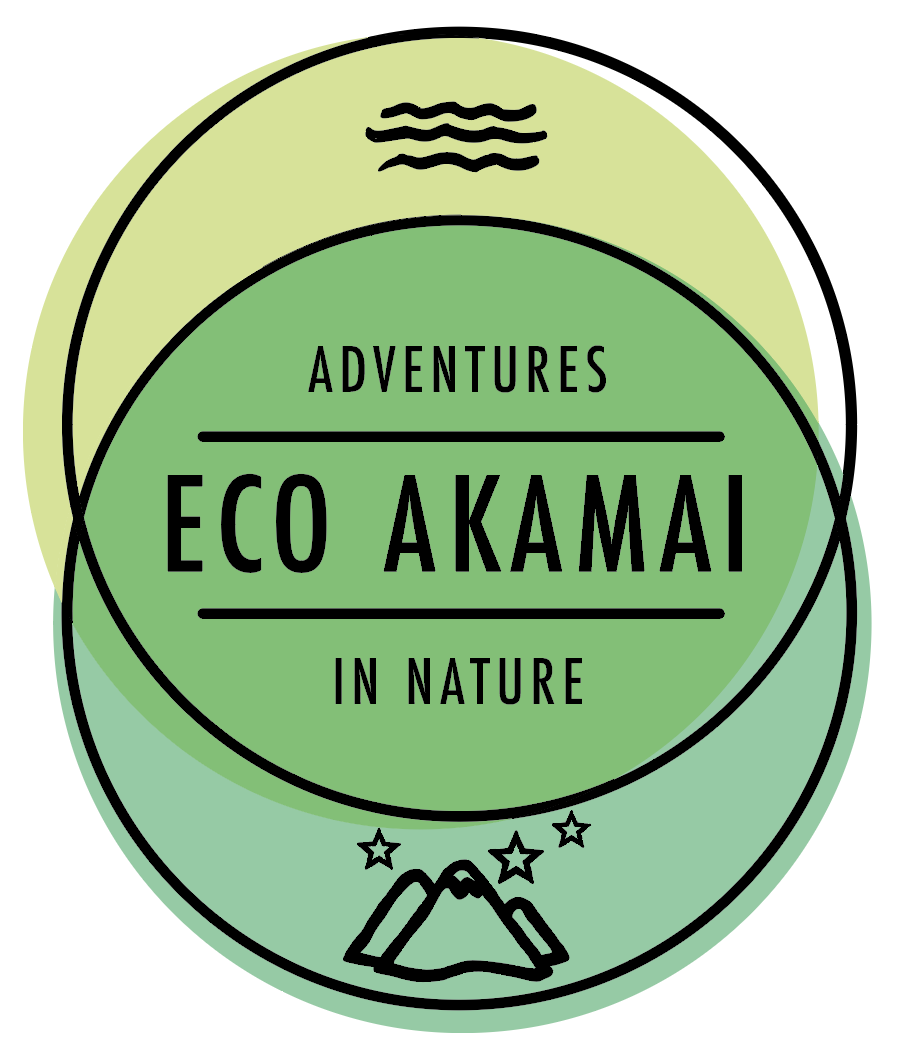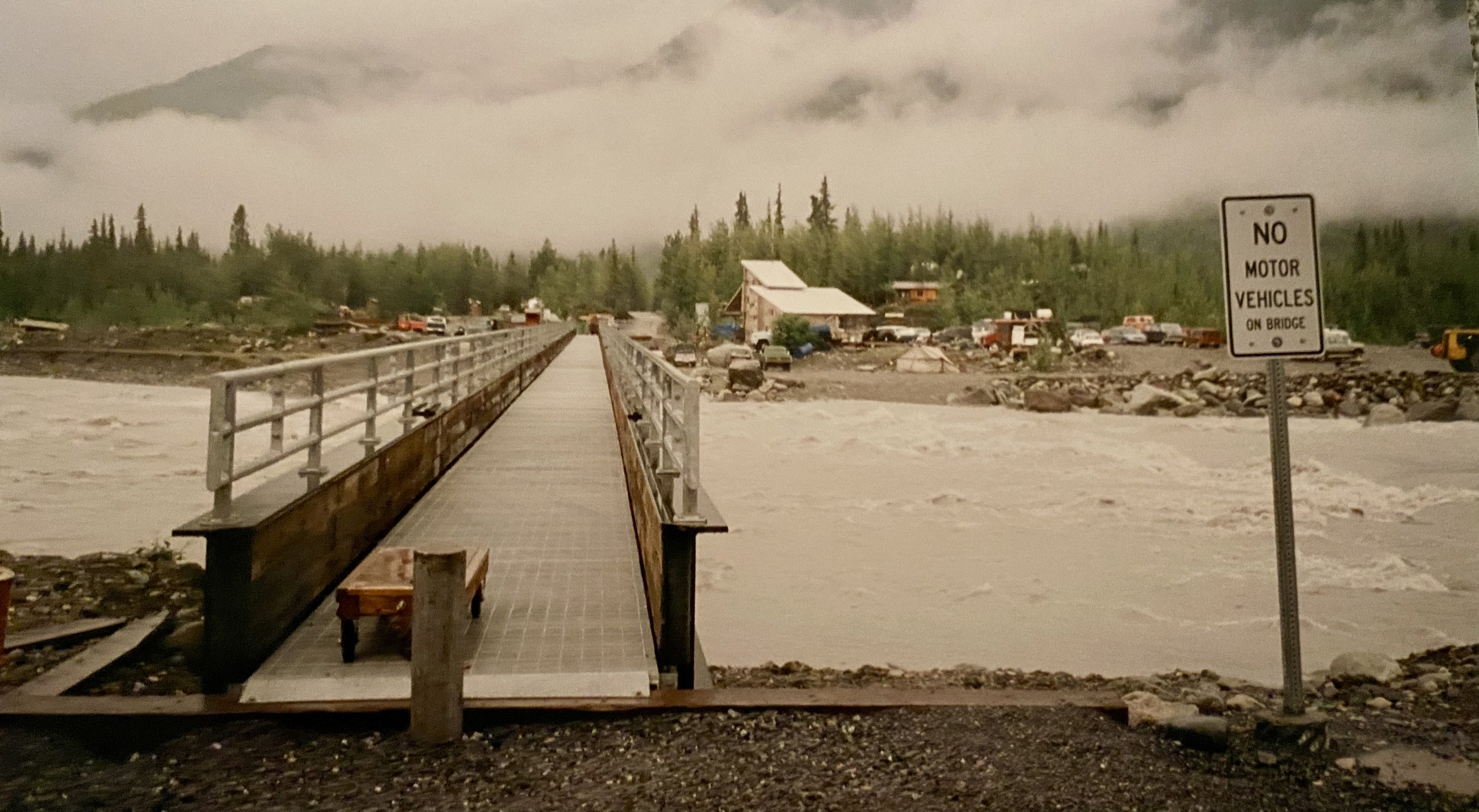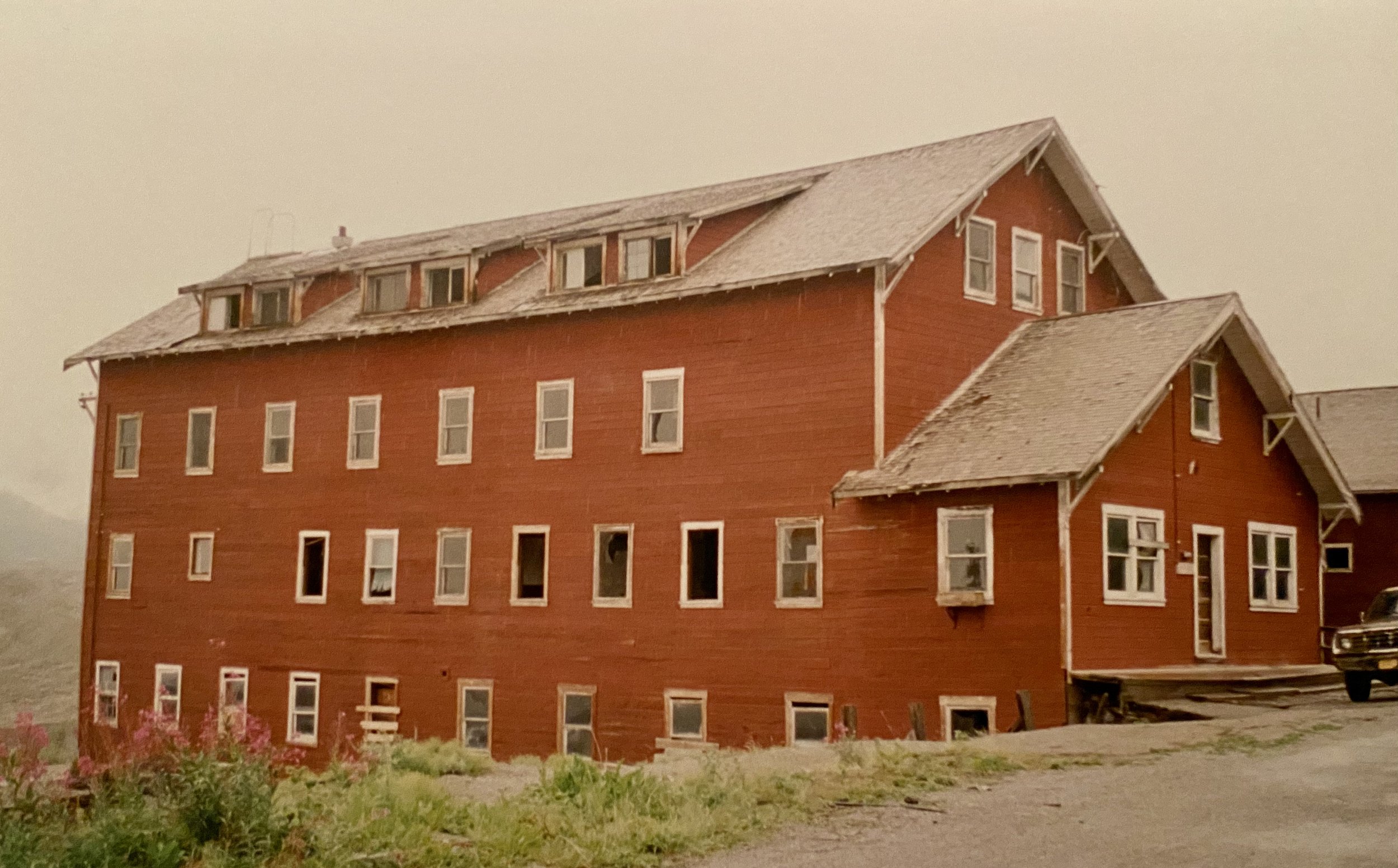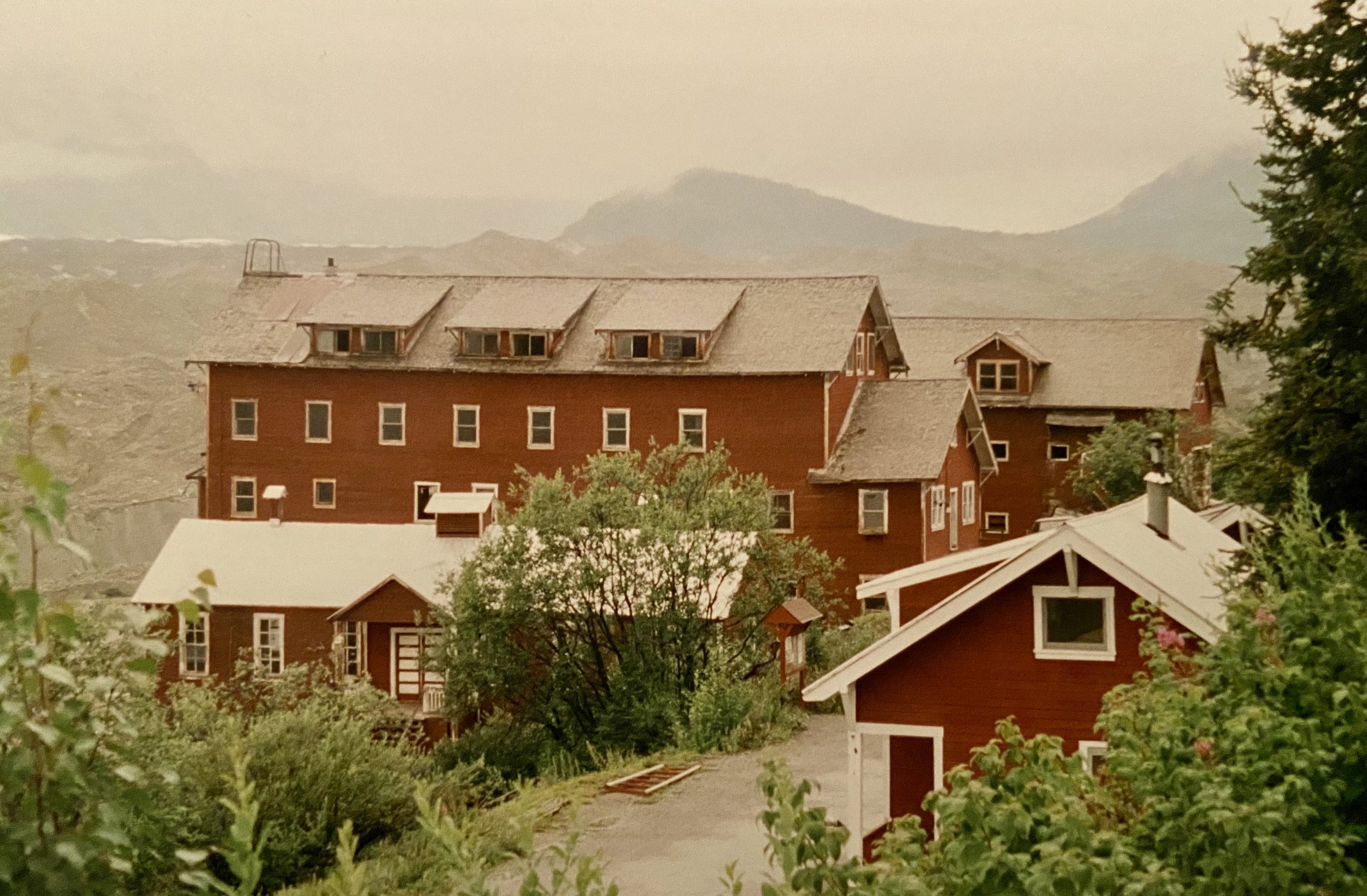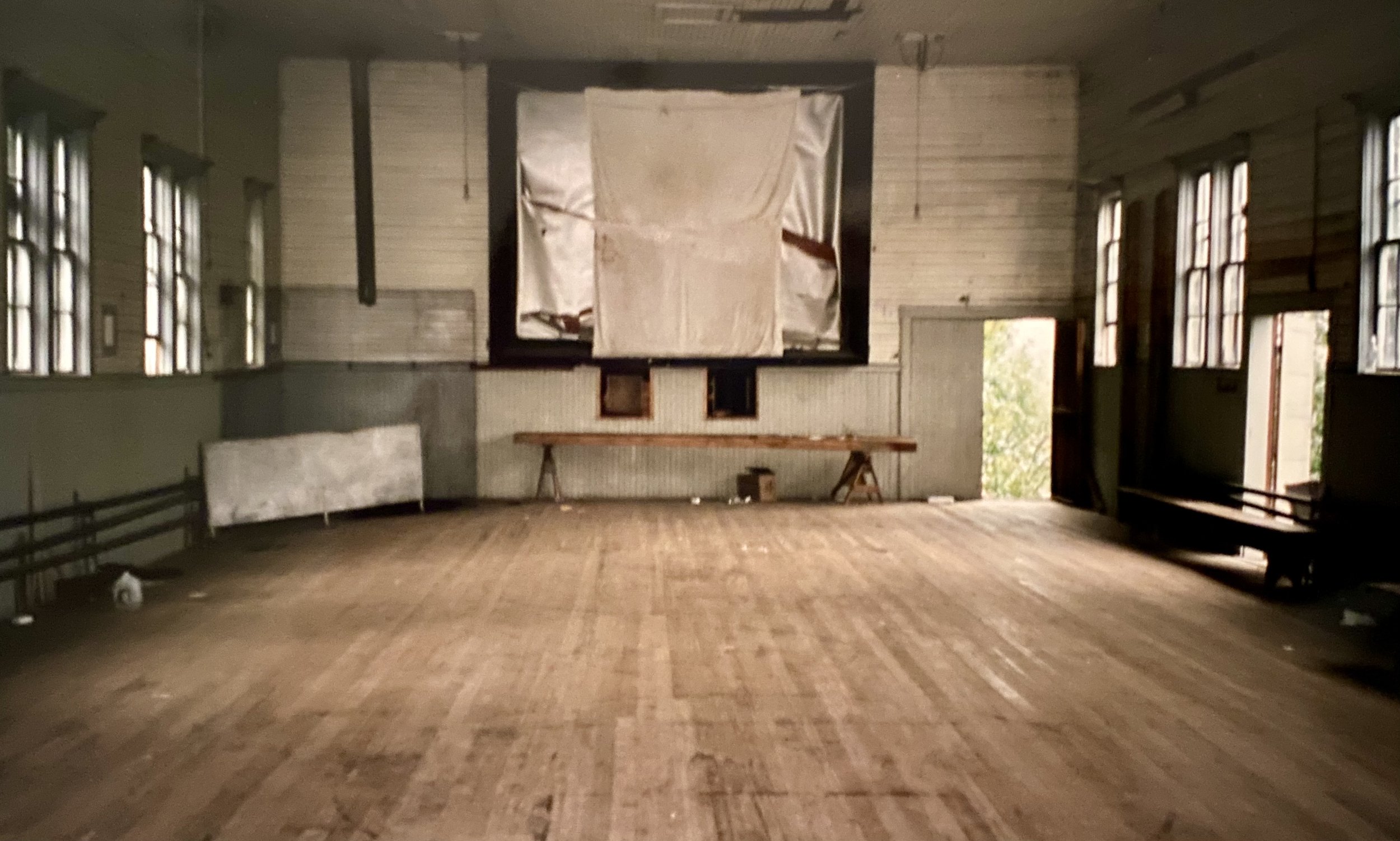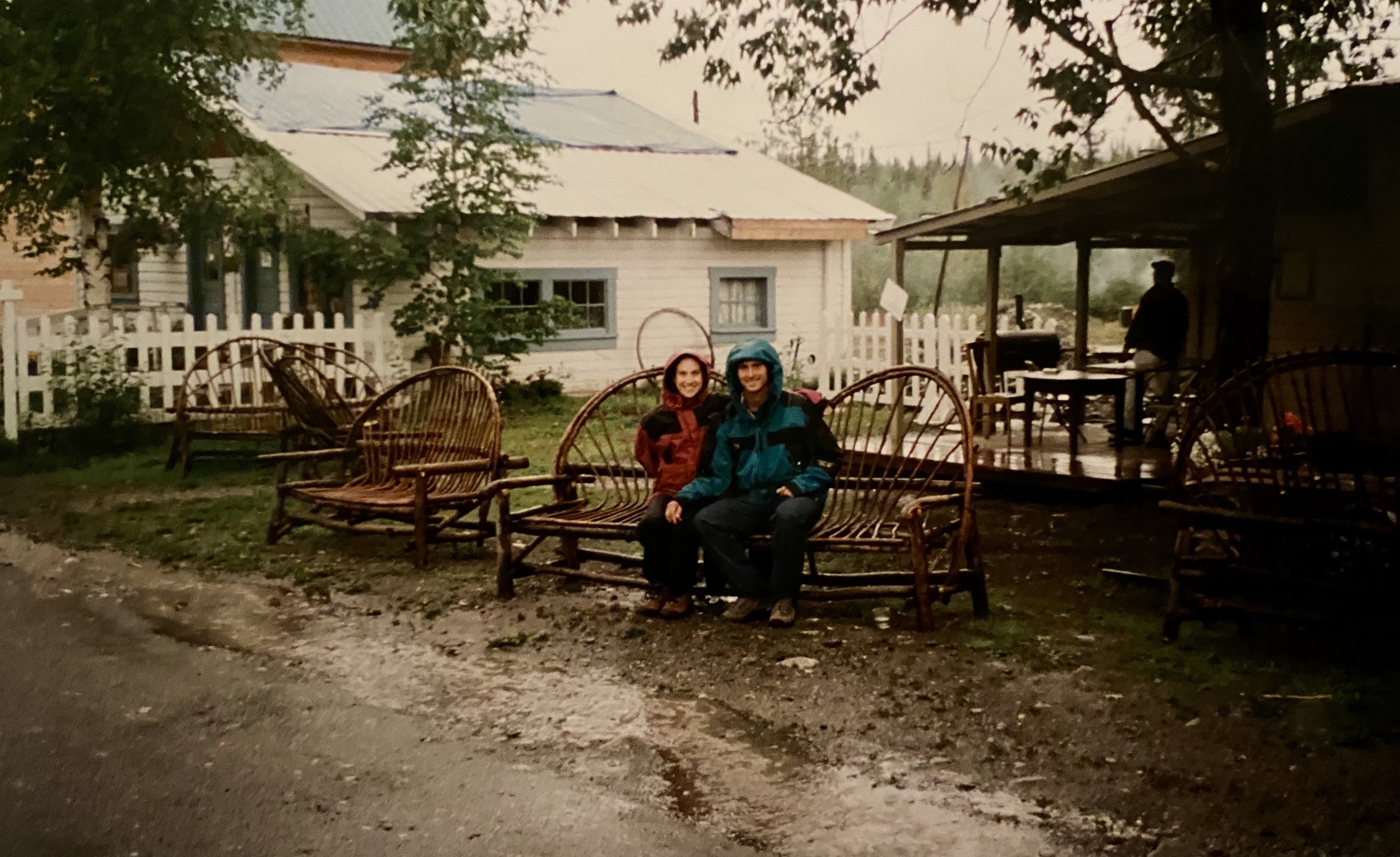Wrangell-St. Elias National Park & Preserve
At the airport car rental, we signed a waiver saying we would not drive on gravel roads. Then we got a wild hair to also include Wrangell-St. Elias, America’s largest National Park in our big Alaska Adventure … and we drove on gravel roads almost the entire journey. The famous McCarthy Road… which was long … took us 475 miles over 9+ hours to conquer. We did not know what to expect, as this was pre-internet and we are using a battered map. So we were pleasantly surprised when we landed in an old mining town. Kennecott Mines National Historic Landmark was a treasure and we spent the rainy day walking through all of the old buildings and around the town. It was an adventure indeed as we had to hike five miles in and five miles out.
One of the most exciting parts of our adventure was walking over the swift Kennecott River footbridge to get to the park … it was an extensive footbridge and I was a wee bit anxious about the crossings. Another of our favorite parts of the Mine was the old dance hall/movie theatre as we saw it in its raw form before it was renovated.
“The Kennecott Recreation Hall, situated in the heart of historic Kennecott, Alaska, is available for weddings, conferences and special events. Built in 1916, it once hosted silent films, dances, and Christmas pageants for mill workers and their families. Today it provides space for a variety of interpretive, educational, community, and recreational activities. This newly restored hall, nestled between the mountains and the Kennicott Glacier, is part of the Kennecott Mines National Historic Landmark within the Wrangell-St. Elias National Park and Preserve.”
“The Kennecott Mines National Historic Landmark includes the land and mining claims that formed the foundation for the Kennecott Copper Corporation, later the Kennecott Minerals Company. The operation had two components: the mines where ore was extracted from the mountains, and the mill town where the ore was processed. From 1911 to 1938, nearly $200 million worth of copper was processed. At the peak of operation, approximately 300 people worked in the mill town and 200-300 in the mines. Kennecott was a self-contained company town that included a hospital, general store, school, skating rink, tennis court, recreation hall, and dairy.”
